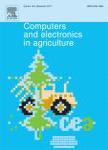版权所有:内蒙古大学图书馆 技术提供:维普资讯• 智图
内蒙古自治区呼和浩特市赛罕区大学西街235号 邮编: 010021

作者机构:Univ Haifa Dept Nat Resources & Environm Management 199 Abba Khoushy Ave IL-3498838 Har Hakarmel Israel Univ Haifa Leon H Charney Sch Marine Sci Dept Marine Biol Morris Kahn Marine Res Stn IL-3498838 Haifa Israel Israel Oceanog & Limnol Res Ltd PBC Tel Shikmona POB 9753 IL-3109701 Haifa Israel Univ Haifa Dept Geog & Environm Studies Spect & Remote Sensing Lab 199 Abba Khoushy Ave IL-3498838 Har Hakarmel Israel
出 版 物:《COMPUTERS AND ELECTRONICS IN AGRICULTURE》 (农用计算机与电子设备)
年 卷 期:2022年第201卷
核心收录:
学科分类:09[农学] 0901[农学-作物学] 0812[工学-计算机科学与技术(可授工学、理学学位)]
基 金:Department of Natural Resources and Environmental Management Petrie Foundation
主 题:Artificial neural network Diffuse reflectance spectroscopy Machine learning algorithm Phycobiliprotein Protein content Seaweed
摘 要:Determining seaweed protein concentration and the associated phenotype is critical for food industries that require precise tools to moderate concentration fluctuations and attenuate risks. Algal protein extraction and profiling have been widely investigated, but content determination involves a costly, time-consuming and high-energy, laboratory-based fractionation technique. The present study examines the potential of a field spectroscopy technology as a precise, non-destructive tool for on-site detection of red seaweed protein concentration. By using information from a large dataset of 144 Gracilaria sp. specimens, studied in a land-based cultivation set-up, under six treatment regimes during two cultivation seasons, and an artificial neural network, machine learning algorithm and diffuse visible-near infrared reflectance spectroscopy, predicted protein concentrations in the algae were obtained. The prediction results were highly accurate (R-2 = 0.95;RMSE = 0.84), exhibiting a high correlation with the analytically determined values. External validation of the model derived from a separate trial, exhibited even better results (R-2 = 0.99;RMSE = 0.45). This model, trained to convert phenotypic spectral measurements and pigment intensity into accurate protein content predictions, can be adapted to include diversified algae species and usages.